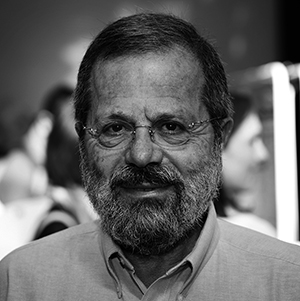 The extreme disparity between islands climate. Map of average annual precipitation in the Canary Islands. From the book Building Energy Sustainability in the Canaries
The extreme disparity between islands climate. Map of average annual precipitation in the Canary Islands. From the book Building Energy Sustainability in the Canaries
In Spain, the construction sector is going through a crucial time for the future. After more than five years of destruction of the traditional model of economic performance based on the promotion of new residential building opens a new path based on the rehabilitation of existing housing stock.
It is a process of radical change that the central government overwhelmingly supports a. Since in 2008 that is implanted Técnicade Building Inspection mandatory under certain conditions and, above all, along 2013 the tendency of government is to achieve mobilize the population to undertake the maintenance and restructuring of cities and older homes. So have appeared successive laws that encourage the reorientation of architecture and construction activity towards improving the existing building. Some problems errors and dysfunctions, as exists in relation to the Energy Efficiency Certification Canary Islands and reveals Araceli Reymundo in the following technical.
We are European, of course ... but nuanced
Lights and shadows of the energy performance certificate for buildings canaries
By Araceli Reymundo Izard
The RealDecreto 235/2013, by approving the basic procedure for certification of energy efficiency in buildings, came into force on the day following its publication in the Official Gazette No. 89 (13/04/2013). According to Royal Decree, from 1 June 2013 Property owners who want to sell or rent a home, must have a Energy Performance Certificate, which will run for 10 years old.
No doubt that the consumer is very important to have information on the energy efficiency of the building that will inhabit, as it will provide an incentive, both from the point of view of comfort and from the energy savings entail the use and maintenance of the. A building consumes less energy efficient, emits less CO2 and is therefore also more sustainable, so it is considered that this certificate is an excellent initiative .... if you take into account common sense and the local particularities of the places where it is applied.
The requirements for energy certification of buildings set in their day in Directive 2002/91/EC of the European Parliament, were transposed RealDecreto inthe 47/2007, of 19 January, through which passed a basic procedure for certification of energy efficiency of new buildings. That same European directive left the concepts and methodology used to draft the CTE (Technical Building Code), mandatory rules for buildings that are made in Spain from 2006, that one of its basic documents (HE-1 Power Saving) reflects the requirements to be taken into account to limit energy demand.
Subsequently adopted another Directive, 2010/31/EU of the European Parliament, circumstance has forced transpose back into Spanish law the changes made with respect to the previous Directive.
You may wonder why so far the development of this article have been pointing out in bold italics the words that refer to Europe? Because the basis of this discussion is that, in energy efficiency, Canary fortunately is far-about 26 ° latitude- of facing a power base or active equipment European climatic rigors. Indeed, the soft thermal cycling and enjoying the magnificent archipelago likely chance of solucionarel conforttérmico inside buildings, simply by design strategies, that can favor minimizing, or even eliminate the need for air conditioning energy consumption. And this aspect is not taken into account either in the development of CTE (DB HE-1) or energy certification procedure.
The MABICAN: Manual Bioclimatic Architecture for Canary Islands.
In 2011, Canary Islands Institute of Technology published the book "Building Energy Sustainability in the Canaries” (you can free download), the second part is a Bioclimatic Architecture Manual for Canaries (From Diego Garcia Luxán M. y A. Reymundo, 2011). It analyzes the 42 most populated of the Canary Islands and it is found that the vast majority of them (40 of the 42 studied) has a mild climate that only through proper passive design (the bioclimatic) buildings could lograrel thermal comfort without using air conditioning installations. This does not happen in most of the Iberian Peninsula and, course, in the rest of Europe.
In this sense, calls attention inthe the definition RealDecreto 235/2013, Chapter I, Article 1 (Object, purpose and definitions), Paragraph 3, letra h) where building is defined as "a roofed construction, walls in which energy is used to condition the indoor climate ". Obviously not the case this consideration canary and share many of the inconsistencies which are then observed.
It is logical that, if we start from the basis that "there is no choice but to use energy to heat the buildings", to penalize the fact that they matter and efficiency bonifique active equipment (boilers, air conditioning, biomass ...) that are used for conditioning.
But of course insist: not the case canary.
Aspects of CTE which take no account of the particular Canary and need to be adapted.
- Moisture is not considered when determining the climate zoning.
Given that one of the most important energy consumption European buildings, and buildings canaries that are not designed taking into account climate- corresponds to the air, the procedure for calculating the energy efficiency, both for new buildings and for the already constructed- should take into account the main variables involved in the thermal comfort of the human: temperature and humidity.
Well, bad start: in the Technical Building Code or CTE (Spanish legislation on which assessment supports energy certification), to establish a climate zoning the locality-can then be deduced that the requirements for the efficient design – only takes into account the temperature and solar radiation, namely, Consider it no moisture. Estasimplificación leads to significant errors, particularly severe in warm, humid climates like the canary where humidity usually ranges between 70 and 95%.
And is that temperatures of 25-26 ° Cen a dry climate like Madrid are bearable and yet with high humidity produce discomfort, so that this aspect should be taken into account in the design requirements. Also taken into account for establishing CTE climatic zoning that considerable differences exist in the Canary Islands between the north and south slopes due to the influence of the sea of clouds, reflecting moisture to saturation (100%).
- Excessive laxity in sunscreens requirement.
Analyzing comparatively MABICAN recommendations and CTE, also shows that it does not require the implementation of some strategies clearly needed in climate canary. Lax such as is particularly the requirement sunscreens, not so necessary in northern Europe. The Canaries, the entire coastal strip hasta800 meters above sea (zona A3), which is the warmest, allowed south façade designs to a 50% glazing without sunscreen, which favors unwanted solar radiation input, especially in summer.
- CTE requirements that go against bioclimatic designs canaries.
In contrast, the CTE if it requires other measures that would be detrimental to the strategies of bioclimatic architecture in Canary. For example, in all cases requires the provision of thermal insulation in the building contact with the ground. This strategy makes sense in cold climates Europeans to no loss of heating energy to the field.
However, in coastal areas of the southern slopes of the Canary Islands (the most populated of the archipelago), severe weather basically corresponds to the summer months being the very mild winter. In this sense, bioclimatic one of the most effective strategies is to encourage the building contact with the ground, to exploit its thermal inertia, since the terrain keeps annual temperature much more stable than the air may help to moderate and stabilize the temperature inside the building, especially during the summer months.
Therefore, CTE the requirement of having in any case the insulation in contact with the ground construction, would prevent benefit of this strategy that could help avoid the need for air conditioning by active systems, reducing energy demand and associated carbon footprint.
The certification of building energy efficiency canaries.
Recognized procedures that currently can be used for assessing the energy efficiency of buildings containing these errors canaries starting, but they are the only observed.
- Penalties for not weatherize, according to the requirements of the CTE.
By way of example, according to the diagram of comfort of the town of Santa Cruz de Tenerife (MABICAN, 2011) can design a building with bioclimatic strategies not need air conditioning or winter or summer. However according to the CTE, whether it would be necessary to air in summer. Remember what is the CTE lax about sun protection requirements in the hollows of the facade and the inability to benefit from contact with the ground because it forces to insulate, which favors summer overheating inside the building.
As a result of these absurd conditions starting- CTE misfit imposed by climate canary- Certification in Energy Efficiency penalizes the building does not have energy for air conditioning in summer- without questioning whether through proper design could be avoided- and instead rewards you project an air that comes from renewable sources and / or efficient.
No doubt that these facilities-efficient, renewable- are highly desirable, especially in the Canaries, and which must be replacing fossil fuels; but it should be noted that the manufacturing, transportation and equipment maintenance and investment has also associated CO2 emissions, by which we mean that, in HVAC, should come into play only when the potential for reducing energy demand through design adapted to the climate are depleted. Would it make sense to reward solar cooling facility for reducing heat gains produced by a large skylight in the roof of a building of social housing? We understand that not, especially if the group that has limited resources to keep.
- Procedures for improving the energy rating: biomass
Once the energy rating of the property, programs allow the technician to suggest improvements to the energy efficiency of the building. One of the improvements that are planned, by which you can achieve a very high rating, is the use of biomass for the operation of installations. This is because the board has considered that the energy generated from biomass is a renewable energy and helping to tackle climate change. It has been estimated that CO2 emissions that are generated by combustion are equivalent to the vegetation is removed lifelong consumed so the carbon footprint associated with this type of fuel is considered zero.
However, we believe that this assignment has been oversimplified as biomass burning emits not only CO2, but also other particles harmful to the environment and, part of the biomass used for combustion, perhaps sequestering CO2 could have continued had it not been used for power generation. But also in the Canary Islands are two important aspects to be considered: that the biomass boiler feed usually made with cheaper material, them pellets, from the mainland by emitting CO2 transport, and is not considered- and biomass in the Canary Islands have a need to use more efficient as is the contribution to the regeneration and improvement of soils for organic farming, using techniques that have been shown to improve the yield of crops, reducing the risk of pests also thereby reducing the use of pesticides.
- Certification for each dwelling on it for all building.
Another inconsistency that favors this procedure for evaluating energy efficiency is the possibility to evaluate a building housing residential housing or evaluate, with the same rating, the whole building.
Due to the benign climate, the correct orientation of the building at Canary has a high percentage of confortdurante lograrel opportunities all year, without resorting to artificial climate. Indeed, due to differences in the winter season sunpath- summer, a home with south façade achieve maximum solar gains in winter and minimum in summer, namely, according to the usual needs. Instead north façade will not receive any sunlight during the colder months. The west facade is the worst because it behaves receive much sunlight during the warmer months at the end of the day, when the building is already overheated, and receives sunlight almost horizontal, to the bottom of the spaces containing.
But energy certification allows the evaluation is made for housing or housing for the entire building so, in a building with housing for those guidelines could be assessed on the same note, whatever its orientation. Perhaps they have been found in Europe is not as relevant determination, but certainly in the Canaries this simplification is nonsense. Considerations such as these make the citizen perceived that such certifications as a purely revenue-raising strategy.
The determination of the energy efficiency of buildings with a rigid methodology for Europe could produce fatal errors. It more appropriate to assess the efficiency of buildings unavoidably considering the possibilities of decreased energy consumption by adapting them to the environment in which they are located, prioritizing the most efficient designs, they are also the least emitters, require less maintenance and lower carbon footprint generated.
Namely: is much more efficient and sustainable building strategies designed to prevent the air conditioning and active equipment you need air conditioning, efficient it is the system that is used. If the building is analyzed and improved through strategies bioclimatic design, may be that even not need energy to ensure comfort. This will make the building less vulnerable to cuts in electricity supply, the inhabitant also less vulnerable to predictable increases in energy rates while make the building more comfortable and healthy and less carbon footprint.
Similarly, if it is to make more efficient a building is already built is important to advance an energy audit to see what aspects could be improved in their design before entering active equipment or propose changes in existing ones by more efficient.
For all the above is estimated that the certification, as it applies in the Canary Islands, could reward inappropriate or unnecessary solutions to our climate (HVAC equipment) and instead not consider other sustainable strategies, energy consumption and zero CO2 emissions, such as air conditioning by passive means bioclimatic featuring designs. In this sense, we believe that the actual energy performance of the building would not be properly valued and weighted.
The Canary Islands government should try to adapt the European directives in areas where this community clearly differs from the rest of Europe. Not the same transposing legislation related to accessibility- limitations common to all the inhabitants of the planet- that energy-related comfort andthe, aspect that differentiates this community and is considered very lucky by its mild climate.
 An example of energy-efficient building, heated by passive means without heating or air conditioning.
An example of energy-efficient building, heated by passive means without heating or air conditioning.
Housing in Regensburg. Thomas Herzog, 1977
More Information:
Lights and shadows of the Energy Performance Certificate for buildings canaries. Web PAGE Araceli architect Reymundo































